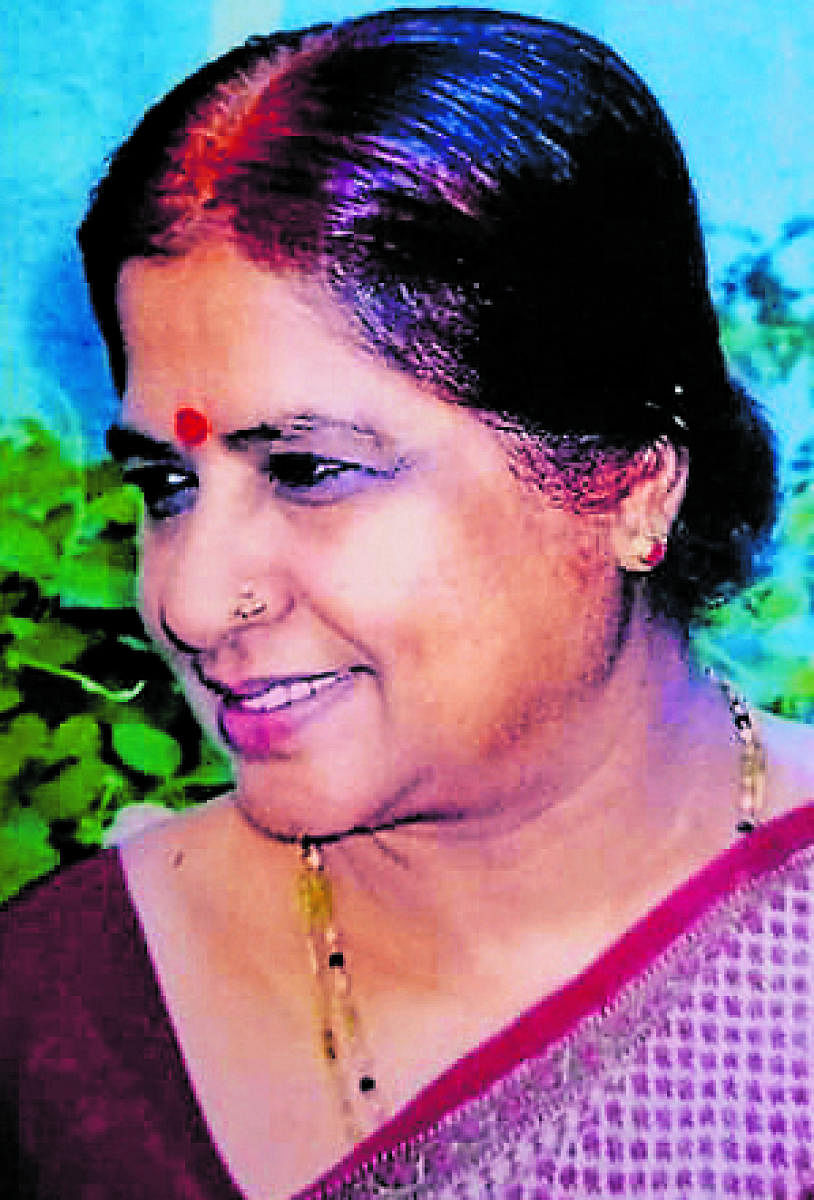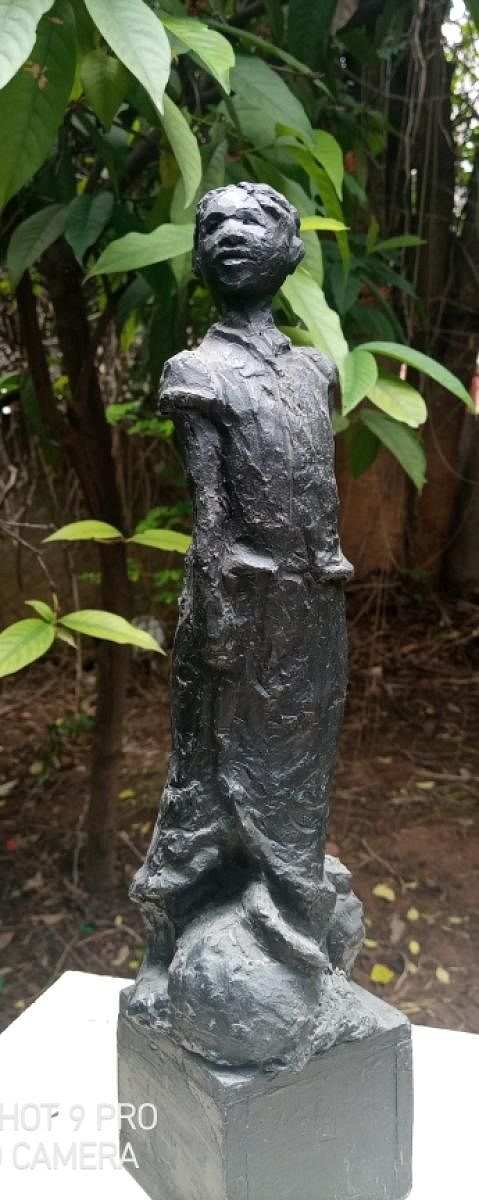

In September last year, Kanaka told me, “The moment I stop sculpting, I know my end is near.” This was in the course of a long conversation when I reminded her that her work included writing, drawing, and sketching. “The stone touch is what rules my life,” she said.
On May 6, when we finally got her an isolation bed in M S Ramaiah Hospital, Bengaluru she was feeble and slurring, but managed to say, “I am tired of these games. I want to go back and start sculpting again.” I had a sinking feeling she would not come back.
My mother, hailed as a pathbreaker — she was the first woman to have her sculptures worshipped in temples — left us on May 13.
Kanku, as I called Kanaka Murthy, was 22 when her gurus D Vadiraj and Hariharan told her she would have to devote a lifetime to sculpture if she was serious about it. The art couldn’t just be a passing fancy.
Without a second thought, she agreed, and started working 10 hours a day with a chisel and hammer. She never compromised on her routine, except when she had to attend to her ailing mother. She didn’t care about family events. “Why do we have so many festivals? Can’t we finish them all in one day and work for the rest of the year?” she said.
Sculpture and music
She was in a steadfast marriage with sculpture, and she had a lifelong crush on music. Her cassette player was always playing favourites like Gangubai Hanagal, Begum Akhtar, Bhimsen Joshi, Ramarao Naik, A Subbarao, Balamurali Krishna, and D K Pattammal.
She tried learning music but could not understand rhythm. She was always either a beat ahead or a beat too slow. “My hands are suited more for unrhythmic hammering than for rhythmic beats,” she would joke. She had no patience with tani avartana, or the solo-drumming interlude, in Carnatic music concerts.
As her only child, she made me learn Hindustani vocal music, the reason being that it did not have tani avartana! She laid down the same 10-hour regimen for me. When dance caught my attention, she said, “It won’t work after a time because of physical age. Music stays till the end.”
Kanku hated spending time in the kitchen. She would not spend more than half an hour on cooking in a day. Her idli would just be a big plate divided into the number of people in the house. She would make just one chapati per person, and it would be so big that you could skip your meals for three days after eating it.
Vadiraj called it ‘aane rotti’ (elephant roti). The curry would change its avatar each day, and end up as chutney on the fourth day. My father S Narayana Murthy was a willing guinea pig for her culinary experiments.
Many things about her were ‘unwomanly.’ As a young girl, I could not relate her manner to feminism or gender politics, but she lived their ideals.
Even when she was menstruating, she would go to temples and perform pujas. “God gave this, so let Him take it back from me,” she would say. She was a believer but never followed rituals. She believed rituals were created only to make women cook and men eat.
Initially, many told her they liked her work but could not assign her the main idol since she was a woman. Her reply? “Your God does not deserve me. Go get it done by a male who might never get the charm I do”. Eventually, many temples installed her idols in their sanctum sanctorum.
From guru Vadiraj, Kanku kept learning for 40 years without questioning. When she was offered a tour camp in London in 1987, she started making her own idols, but she still consulted her guru.
Years later, on our street in Kammanahalli in Bengaluru, she noticed the five-year-old daughter of a construction worker carrying water every day for cooking. She named her ‘Anbu’ and made a sculpture of her. Now, this was an eye opener as she broke all conventional ideas of iconography and created it in her own idiosyncratic style.
When I changed from her daughter Sumati to son Rumi Harish, she became my best friend and instilled in me a sense of independence. She never dissuaded me from expressing myself in any manner. I will not miss you, Kanku, for you will live for centuries through your sculptures.